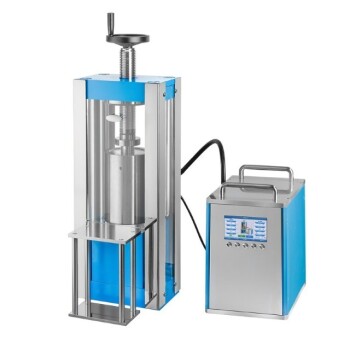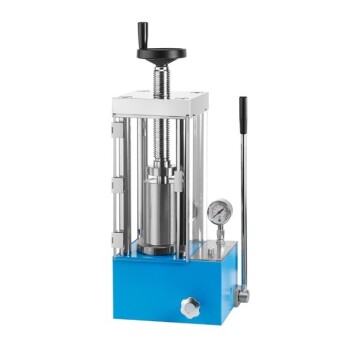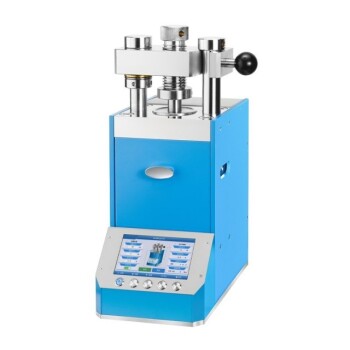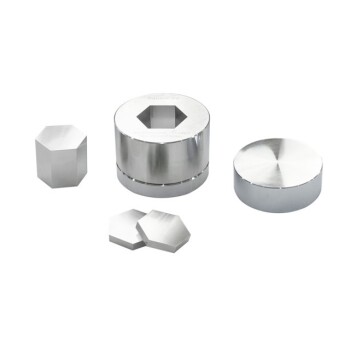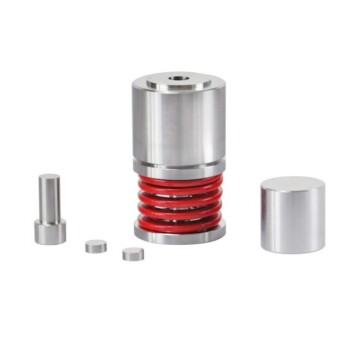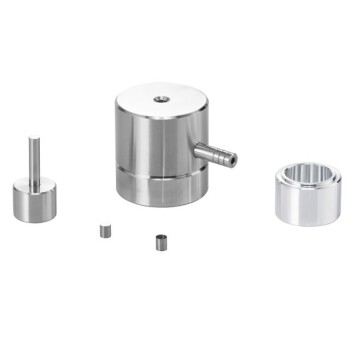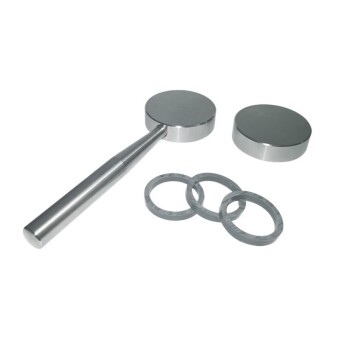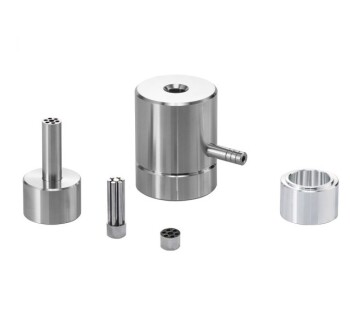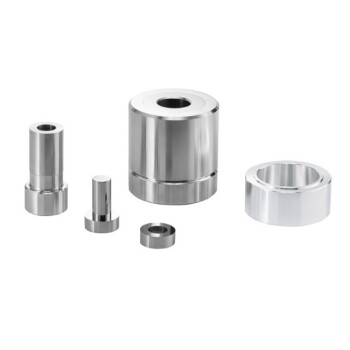When moving beyond traditional powder metallurgy, the main alternatives to Cold Isostatic Pressing (CIP) are Hot Isostatic Pressing (HIP) and shock-wave compaction. While CIP is a foundational process for uniformly compacting powders at room temperature, these alternatives introduce heat or extreme pressure dynamics to achieve significantly higher density and enhanced material properties, often in a single, consolidated step.
The choice between CIP and its alternatives is not about which is "better," but which is appropriate for the desired outcome. CIP is for creating a uniform "green" part for subsequent processing, while HIP and shock-wave compaction are advanced methods designed to produce a fully dense, high-performance, near-net-shape component.
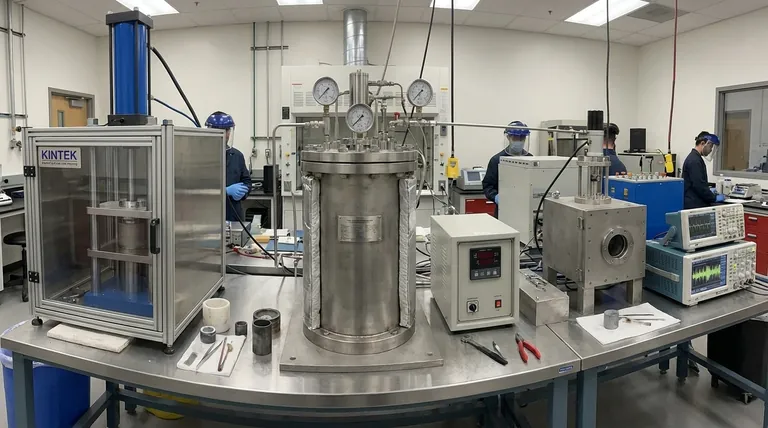
Understanding the Baseline: Cold Isostatic Pressing (CIP)
What CIP Achieves
Cold Isostatic Pressing involves placing powder in a flexible mold and submerging it in a fluid. This fluid is then pressurized, exerting uniform pressure from all directions onto the powder.
The result is a "green compact." This part is solid enough to be handled but has not yet reached its final density or strength. It possesses significant internal porosity.
The Inherent Next Step: Sintering
A green compact from CIP almost always requires a subsequent high-temperature process called sintering. During sintering, the part is heated below its melting point, causing the powder particles to bond and densify, which significantly increases its strength.
The Primary Alternative: Hot Isostatic Pressing (HIP)
How HIP Transforms the Process
Hot Isostatic Pressing combines pressure and heat into a single operation. A component, which can be encapsulated powder or even a pre-existing solid part with internal defects (like a casting), is placed inside a high-pressure vessel.
The vessel is then filled with a high-pressure inert gas (typically argon) and heated simultaneously. This combination of high temperature and isostatic pressure works to close and weld shut any internal voids.
Key Advantages of HIP
The primary benefit of HIP is its ability to achieve nearly 100% of the material's theoretical density.
This elimination of microporosity leads to dramatic improvements in mechanical properties, such as ductility, fatigue strength, and fracture toughness. It consolidates and sinters in one cycle.
Common Applications
Because of its ability to produce superior, reliable parts, HIP is critical in high-performance industries. It is standard for aerospace components like turbine disks and engine parts, medical implants, and advanced tooling.
The Niche Alternative: Shock-Wave Compaction
How Shock-Wave Compaction Works
This is a dynamic and highly specialized process. It uses a high-velocity shock wave, often generated by an explosive impact, to deliver immense pressure to a powder in a matter of microseconds.
The rapid, intense compaction occurs with very little overall temperature increase.
A Unique Advantage: Preserving Microstructure
The key feature of shock-wave compaction is its ability to achieve full density without significant grain growth.
Conventional thermal processes like sintering or HIP cause material grains to grow, which can be detrimental for certain advanced materials. Shock-wave compaction bypasses this, locking in fine-grained or even amorphous (non-crystalline) structures.
Specialized Use Cases
This technique is used for materials that are difficult or impossible to consolidate with heat. Applications include producing bulk components from nano-structured powders, creating diamond composites, and forming novel alloys that would otherwise degrade under high temperatures.
Understanding the Trade-offs
Process Cost and Complexity
CIP is the most accessible and cost-effective of the three, with relatively simple equipment requirements for the pressing stage.
HIP systems are highly complex and expensive to acquire and operate due to the need to safely manage extreme temperatures and pressures.
Shock-wave compaction is a highly specialized, often experimental process with significant logistical and safety considerations, limiting its widespread use.
Final Material Properties
CIP followed by sintering produces good, functional parts, but some residual porosity is often unavoidable.
HIP produces parts with superior, highly predictable mechanical properties due to near-total densification.
Shock-wave compaction enables the creation of materials with unique microstructures and properties that cannot be achieved through thermal methods.
Making the Right Choice for Your Application
Your decision must be driven by your end goal, balancing cost, material constraints, and the required performance of the final component.
- If your primary focus is cost-effective shaping for standard materials: CIP followed by sintering remains the established and most economical path.
- If your primary focus is maximum performance and reliability in critical components: HIP is the industry standard for achieving superior, fully dense materials.
- If your primary focus is processing novel materials while preserving unique, fine-grained microstructures: Shock-wave compaction offers a specialized capability that thermal processes cannot match.
Ultimately, understanding these core differences empowers you to select the compaction technology that best transforms your powdered material into a high-performance final product.
Summary Table:
| Technology | Key Features | Ideal Applications |
|---|---|---|
| Cold Isostatic Pressing (CIP) | Uniform pressure at room temperature, requires sintering | Cost-effective shaping for standard materials |
| Hot Isostatic Pressing (HIP) | Combines heat and pressure for near-100% density | Aerospace components, medical implants, high-performance parts |
| Shock-Wave Compaction | High-velocity compaction, preserves fine microstructures | Novel alloys, nano-structured powders, diamond composites |
Need expert guidance on selecting the right lab press for your powder compaction needs? KINTEK specializes in lab press machines, including automatic lab presses, isostatic presses, and heated lab presses, tailored for laboratory applications. Our solutions help you achieve precise compaction, improve material properties, and streamline your research or production processes. Contact us today to discuss how our equipment can enhance your lab's efficiency and results!
Visual Guide
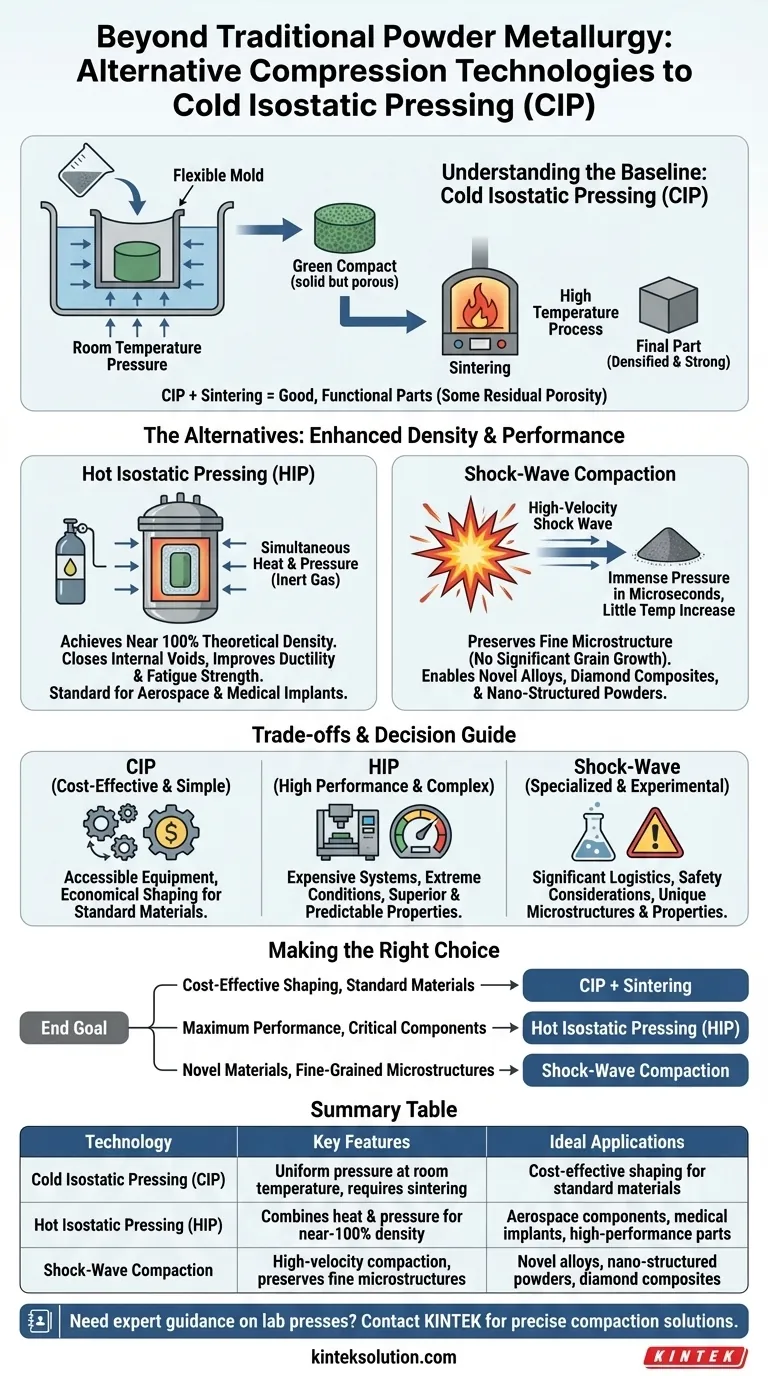
Related Products
- Electric Split Lab Cold Isostatic Pressing CIP Machine
- Manual Cold Isostatic Pressing CIP Machine Pellet Press
- Automatic Lab Cold Isostatic Pressing CIP Machine
- Laboratory Hydraulic Press 2T Lab Pellet Press for KBR FTIR
- Lab Polygon Press Mold
People Also Ask
- What is Cold Isostatic Pressing (CIP) used for? Achieve Uniform Density in Complex Parts
- Why is material loss low in cold isostatic pressing? Achieve High Material Yield with CIP
- How does CIP improve the mechanical properties of refractory metals? Boost Strength and Durability for High-Temp Applications
- How does Cold Isostatic Pressing (CIP) compare to Powder Injection Molding (PIM) in terms of shape complexity? Choose the Best Process for Your Parts
- What are the advantages of Cold Isostatic Pressing (CIP) for pellet preparation? Achieve Superior Density and Uniformity
